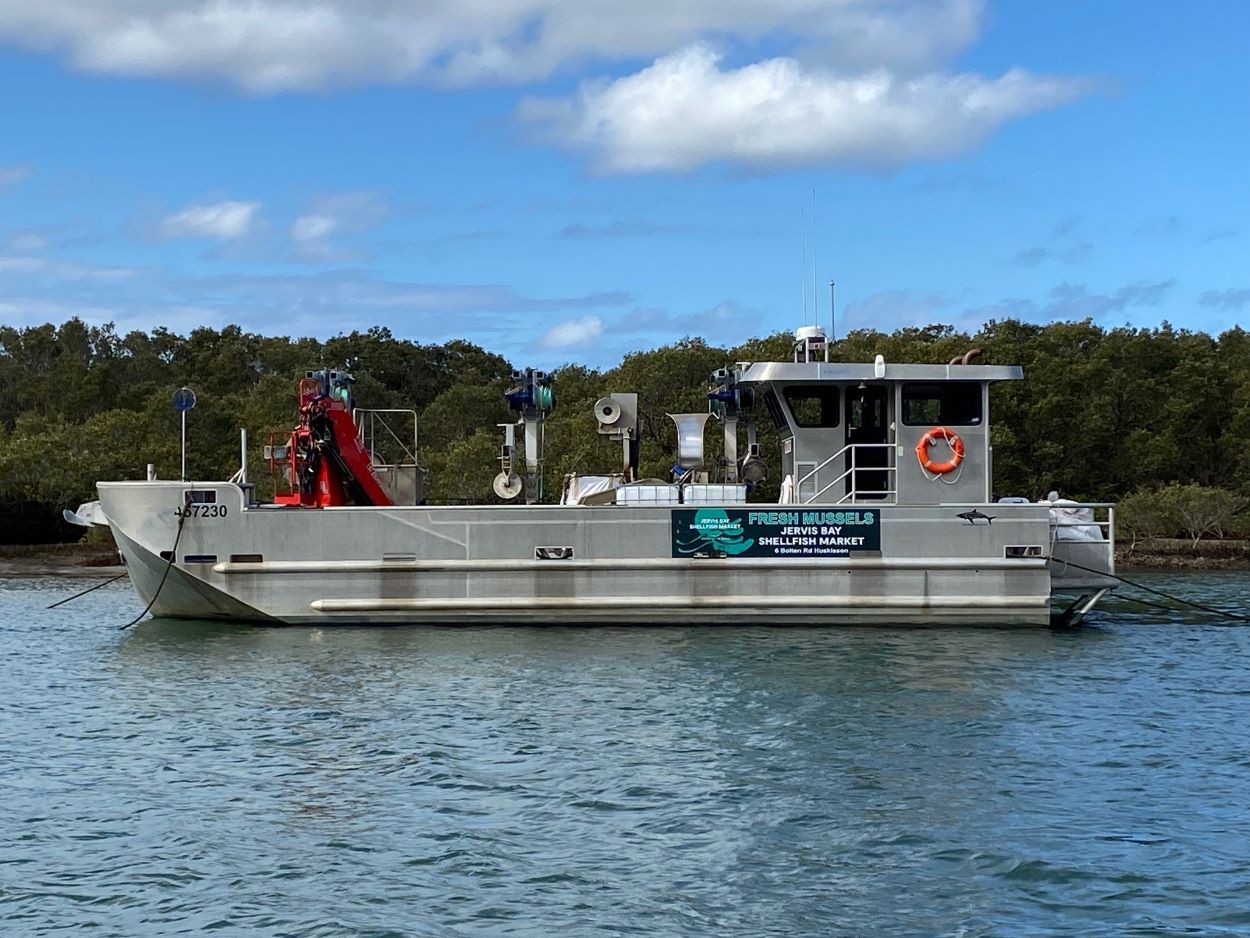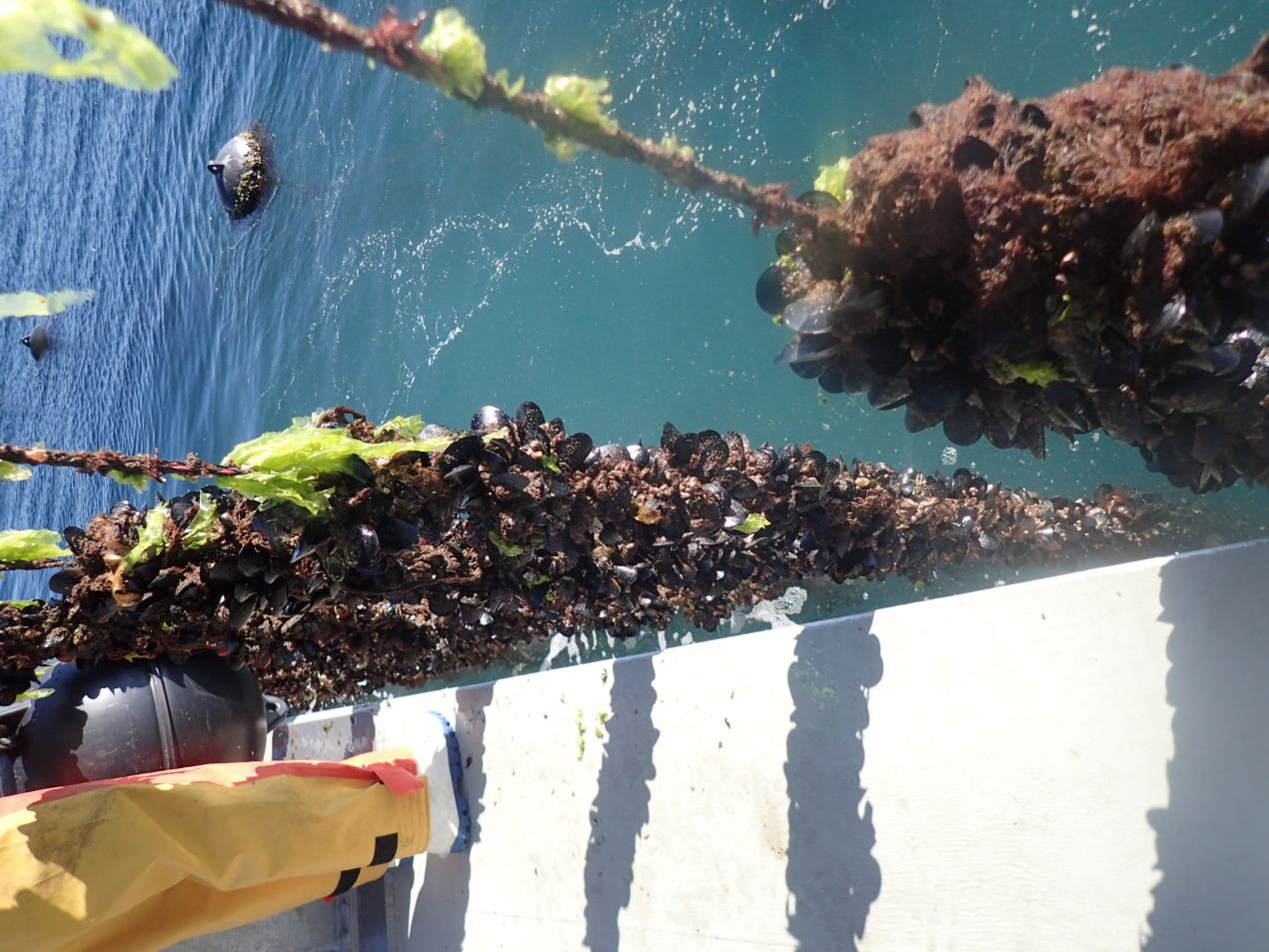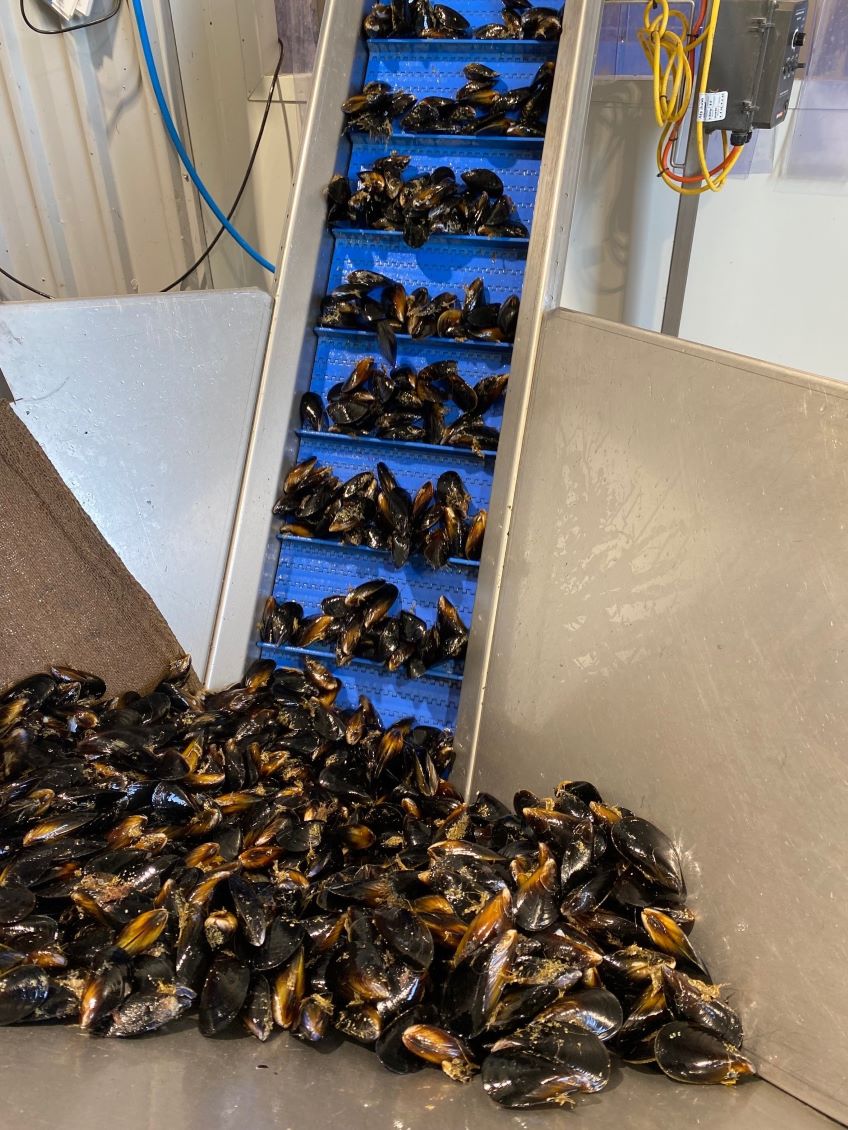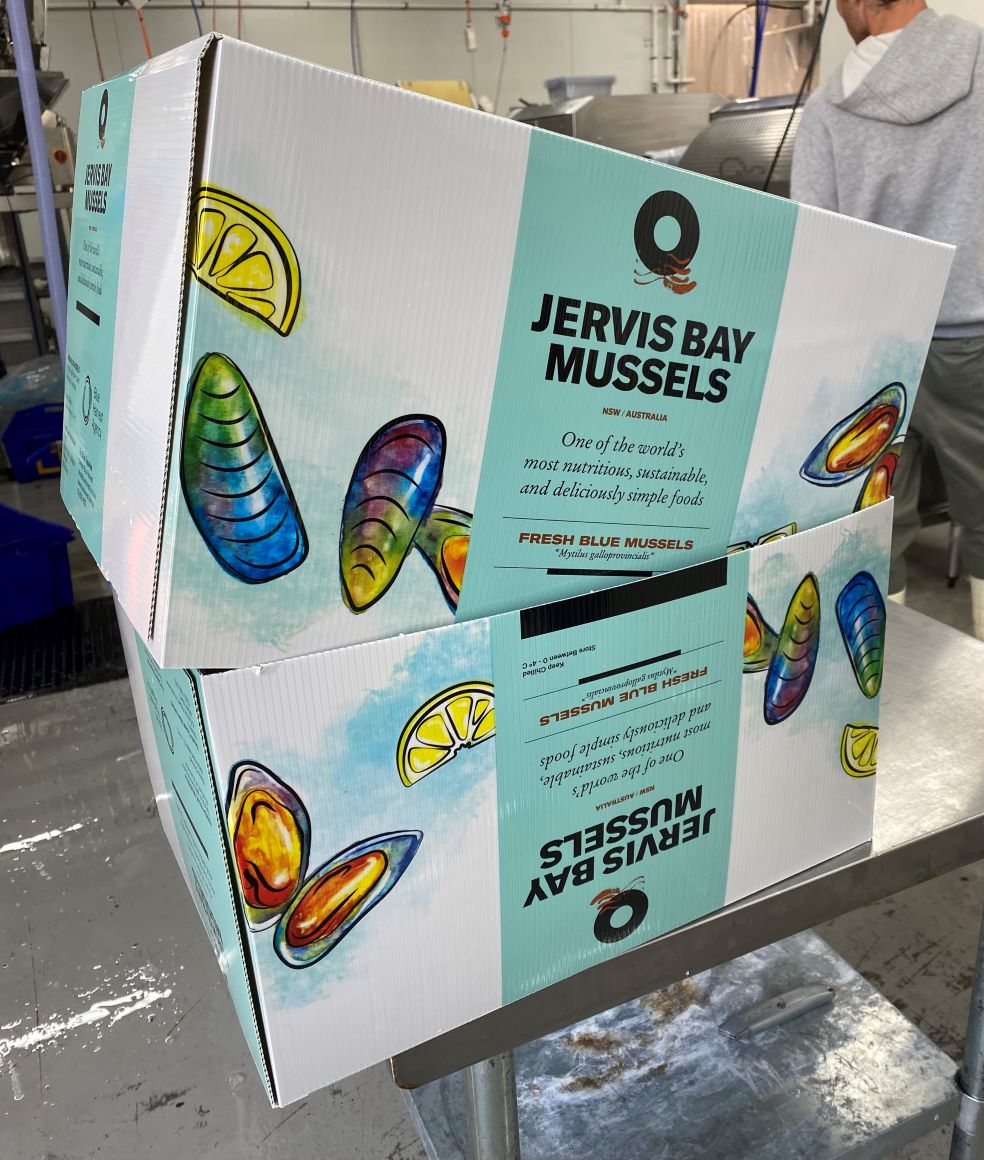
Modification Application – Shellfish Leases
DPI are seeking approval to adjust the coordinates of two approved aquaculture leases and relocate one lease in Jervis Bay for improved community and operational outcomes. Exhibition now closed.
Frequently Asked Questions (FAQ)
Proposed Modifications to Commercial Shellfish Aquaculture Leases (SSI-5657)
In Jervis Bay there are three approved shellfish aquaculture leases with a total area of 50 hectares. South Coast Mariculture Pty Ltd (SCM) is the aquaculture business that operates these leases in accordance with an aquaculture permit issued by NSW Department of Primary Industries (NSW DPI).
The aquaculture leases were approved in 2014 by the NSW Department of Planning and Environment (NSW DPE) as a State Significant Infrastructure development (approval SSI-5657) in accordance with the Environmental Planning and Assessment Act 1979. An Environmental Impact Statement was provided at the time and can be viewed here.
Two of the leases are located off Callala Beach and one lease over a former mussel farm off Vincentia. Aquaculture leases AL15/001 and AL15/002 are located 1.4km and 1.9km southeast of Callala Beach respectively (Figure 1) and AL15/003 is 650m from the Vincentia waterfront (Figure 3). Blue Mussels and oysters are currently grown on Callala Beach leases. There has been no infrastructure installed on the Vincentia lease.
NSW DPI and SCM are seeking approval from the NSW DPE and the Minister for Planning and Public Spaces to modify the activities approved under SSI-5657 on the three aquaculture leases in Jervis Bay. Several changes to the original approval have been proposed for better community amenity outcomes, and a switch to the latest best practice aquaculture systems.
A Modification Application has been submitted to the NSW DPE and was exhibited for public comment. The exhibition period is now closed.
History of aquaculture in Jervis Bay and current activities
Jervis Bay has a long history of aquaculture. Oyster aquaculture was undertaken in Currambene and Moona Moona creeks from 1935 – 1991. Blue Mussel aquaculture was undertaken in Vincentia from 1972 – 2008 and a longline and ranching scallop trial was undertaken between 1992 – 1994.
SCM has been cultivating Jervis Bay Mussels on the Callala Beach leases since 2019. Since this time, they have developed their business, adopting and pioneering industry best practice technology.
SCM currently employs 30 staff with a production target of close to 2,000 tonnes of Jervis Bay Mussels and operates a seafood processing facility and retail outlet in the Huskisson Industrial Estate. They are one of the largest employers in Huskisson.
Since operations began, they have met their statutory requirements including annual environmental reports, production reports, benthic surveys, water quality testing as part of the NSW Shellfish Program, community clean up events, and responses to community concerns as required. Information about SCM including reporting is available on their website.
What are the proposed modifications?
The proposed modifications are displayed in Figures 1, 2, and 3 as follows.
They include moving the two Callala Beach leases slightly north-west, moving the Vincentia lease to be in-between the Callala Beach leases, and adopting new innovative anchor and buoy technologies on all leases.
The proposed modifications would increase the lease area. This increase will allow for ongoing production during the lease realignment process and support enhanced production economies in the longer term.
If approved, the modifications would result in an increase in total lease area from 50 to 70 hectares.
An assessment of the proposed modifications indicates no significant increased operational/social/environmental risks.
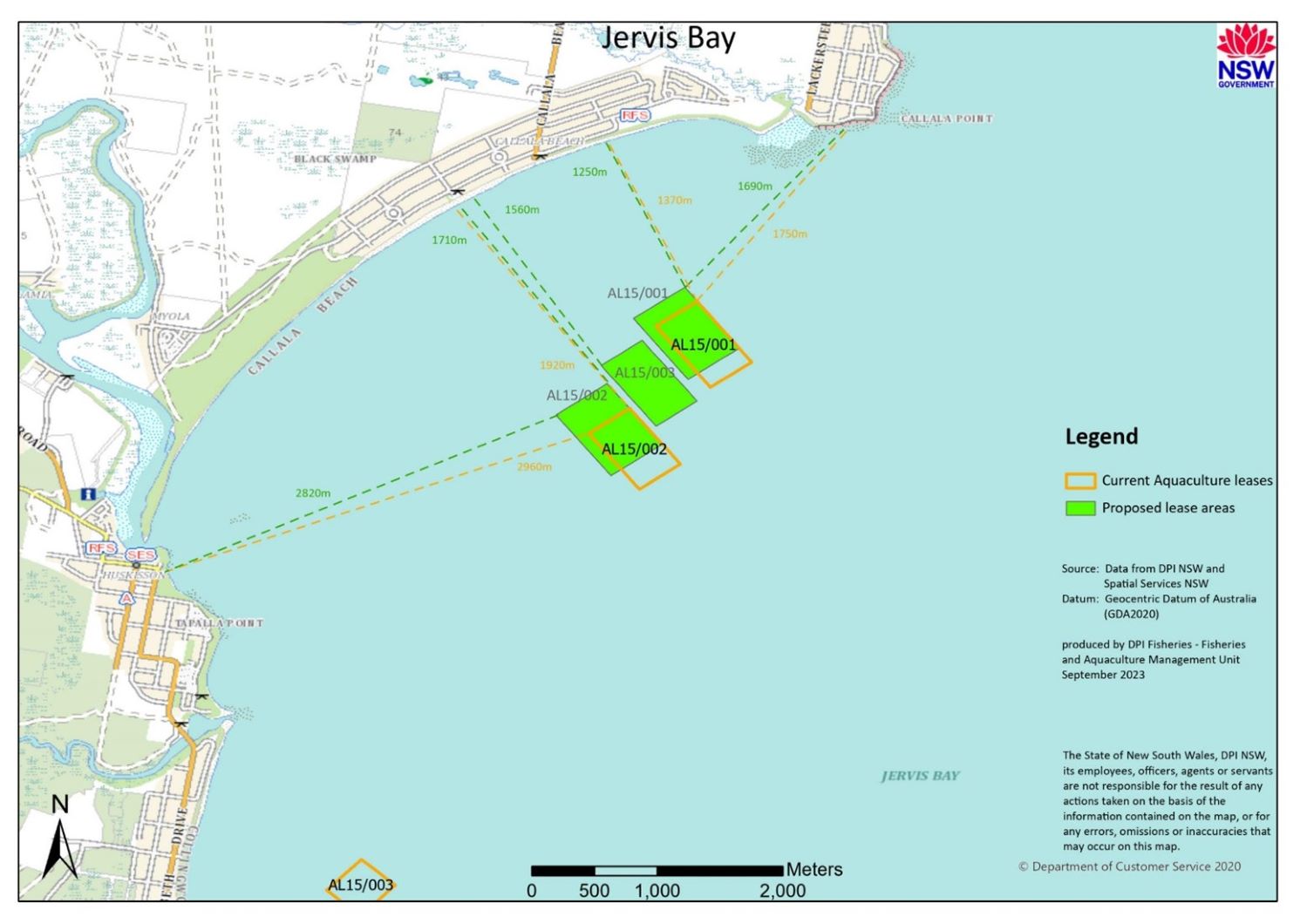
Figure 1. Map of Jervis Bay showing the current location (orange outlines) and proposed modification of the aquaculture leases (green filled polygons)
Why are the modifications proposed?
- To improve community amenity by relocating the inshore Vincentia lease to the offshore location of the Callala Beach leases.
- To correct an error in Callala Beach lease coordinates made when maps were digitised in 2013.
- To allow for the realignment of mussel longlines for operational efficiencies.
- To increase the lease area to allow for the re-alignment of longlines and maintain production during the modifications, while enhancing the economics of the business going forward.
- To adopt new anchor and buoy technology to reduce the already low risks to marine fauna and the environment.
How are the modifications expected to affect the environment/community?
- Of the 22 operational/social/environmental risks identified in the 2014 Environmental Impact Statement (EIS), the proposed modifications will result in eight risk ratings decreasing and 14 risk ratings remain the same. No risk ratings have increased.
- Relocation of the Vincentia lease to the Callala Beach location is expected to reduce visual/amenity effects. The lease would be moved to 1,560m offshore as opposed to the current 650m inshore site.
- The adoption of new infrastructure will enhance environmental and social outcomes.
- It is forecast the modifications will increase local employment opportunities as well as the quantity of high-quality, sustainably sourced seafood that goes through the local suppliers.
- Mussel aquaculture is recognised as a restorative food production system. It does not require any feed input, it supports fish diversity, cleans the water, is low carbon emitting and extremely water resourceful.
- SCM funds and resources several environmental projects in Jervis Bay including water quality monitoring, coastal clean-ups including Tide-to-Tip, benthic monitoring surveys, and circular economy shell recycling projects. SCM will continue and expand on their environmental outcomes, including moving towards a zero-waste policy.
What are the potential impacts to recreational boaters, fishers and divers?
- The leases remain non-exclusive, meaning access is not restricted for boating, fishing or diving activities. Safe navigation around the leases is still required and it is an offence to interfere or damage lease infrastructure.
- SCM has information on tie up and boating best practice around the leases on their website for fishing and diving.
- Mussel farms often act as additional habitat with many marine fish and invertebrates aggregating in the infrastructure.
- 50 metre corridors will be provided between the three Callala Beach leases to allow for a way of access for vessels.
- A notice to mariners will be issued upon the approval of the change of locations.
- Navigational markers and buoys will still be used, following on best practices to meet the balance between maintaining visual amenity and optimising marine vessel safety.
Are there any aquaculture lease activities permitted within the Jervis Bay Marine Park?
Yes. The aquaculture leases are located in the Habitat Protection Zone of Jervis Bay Marine Park, which is a multiple use zone that caters for a wide range of activities. Shellfish extensive aquaculture (no nutrient/feed input) is permissible within this zone.
What process was undertaken to approve the aquaculture leases in 2014?
In 2013/14, NSW DPI Fisheries prepared and submitted an EIS, Environment Management Plan (EMP), Visual Amenity Report and a Response to Submissions Report. These were lodged as part of a State Significant Infrastructure application to the NSW DPE. State Significant Infrastructure-5657 approval was granted by the NSW DPE in 2014. These documents are available here.
How have potential issues been identified and mitigated?
A risk assessment based on environmental, social and cultural factors has been updated. Out of all 22 risks identified in the EIS developed in 2014, 16 risks remain the same, and six are expected to improve with the modifications. Two new risks were assessed and are not significant. They include future aquaculture expansion and biofouling.
During the initial approval process of the current operations, NSW DPI undertook community consultation to identify potential issues associated with the aquaculture leases. Issues raised during the consultation were addressed in the EIS.
An Environmental Management Plan was also developed to detail how identified risks will be mitigated. Mandatory requirements such as annual benthic surveys, regular maintenance, marine faunal interactions report, and responses to complaints have generated information and data which inform sustainable aquaculture activities going forward. Aquaculture permit and consent conditions reflect these requirements.
What will be placed on the leases?
Longline culture systems are used on the Callala Beach leases to culture approved species including Blue Mussels, Sydney Rock Oysters, Native (Angasi) Oysters, Pearl Oysters and Scallops. Vincentia lease does not currently have infrastructure installed on it.
The infrastructure includes an anchoring and mooring system that is connected to a rope ‘backbone’ from which shellfish are suspended (Figure 2). The number of longlines within each lease may vary, depending on the wave climate, water depth and currents at each site. Dark coloured intermediate surface buoys are used along each longline system. Navigational markers identify the boundaries of the leases.
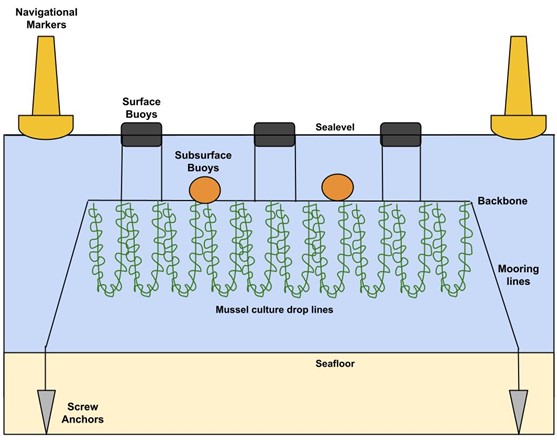
Figure 2. The infrastructure layout of the leases.
Why were the sites originally chosen?
Jervis Bay is one of only three marine embayments on the NSW coast that is suitable for extensive aquaculture. Jervis Bay has a history of aquaculture production. The current operators have had production success using longline systems as per best practice and been in operation for four years.
The clear waters of Jervis Bay are largely due to the mixing of warm water from the East Australian Current and cooler water from Bass Strait. Periodic upwellings of cold, nutrient-rich water from the nearby Continental Shelf combine with currents flowing clockwise around the bay, completely flushing it out every 24 days or so.
In identifying suitable lease locations within Jervis Bay during the initial approvals process, a number of potential constraints were considered:
- Marine Park Sanctuary Zones
- Commonwealth Waters
- Designated anchor/mooring areas
- Wharves and boat ramps
- Main passage for recreational boating
- Naval training and mooring areas
- Seagrass beds
- Rocky reefs
- Dolphin aggregation areas
- Most frequented fishing and diving locations
- Bait gathering areas
- Water depth
- Sailing courses and tourism treks
- Marine heritage items
How sustainable is shellfish aquaculture, and does it pose a risk to the environment?
Current environmental monitoring of the existing mussel farming indicate there has been no significant impacts to the benthic community and sediment quality below, or in close proximity to the leases. This is an annual reporting requirement, in conjunction with an independent environmental audit. The reports are available on the SCM website.
The results from a report completed by The University of Newcastle highlighted that based on water quality, seabed characteristics, sedimentary characteristics (particularly % Total Organic Carbon), and fish faunas, the present stocking of Blue Mussels at the Callala Beach leases is having no detectable effect on the marine environment under and nearby leases and at control sites in Jervis Bay.
The cultured shellfish rely on natural foods for growth, resulting in a nett export of carbon and nutrients such as nitrogen and phosphorus from the waters of Jervis Bay.
A BDO EconSearch 2023 report discovered that the estimated value of nitrogen and phosphorus removal by mussel and oyster aquaculture in NSW is $5.6 million.
Longline systems are the predominant culture methods for shellfish cultivation in Australia.
SCM is one of only two Australian mussel farms to be Best Aquaculture Practices (BAP) certified.
BAP certification means that SCM is assessed to be demonstrating the highest international standards of environmental responsibility, social accountability, animal health and welfare and food safety. BAP standards are endorsed by the Global Food Safety Initiative and the Global Sustainable Seafood Initiative.
Will the lease infrastructure have an adverse interaction with the marine fauna?
Since the mid-1970’s, there have been no instances of entanglement with marine mammals in Twofold Bay or Jervis Bay aquaculture longline leases.
Since current operations began on the Callala Beach leases, a total of 11 unharmed marine fauna interactions consisting of dolphins, seals and 1 turtle passing through the lease areas has been reported. A Marine Fauna Interaction Management Plan is available on the SCM website.
To prevent adverse interactions with marine fauna, the latest suitable longline culture technologies and designs are employed.
Mooring and backbone ropes are kept under tension to prevent marine fauna entanglement.
How will the longlines lease infrastructure be marked to make sure it is not a hazard to water safety and navigation?
Transport for NSW require that the extremities of aquaculture leases are to be marked with appropriate navigational buoys with lights.
A notice to mariners would be issued and the leases will be marked on navigational charts.
If the modification application is approved the new navigational safety configuration will only require a total of six marker buoys (Figure 3). This is a reduction from the ten marker buoys currently being used on the Calla Beach leases.
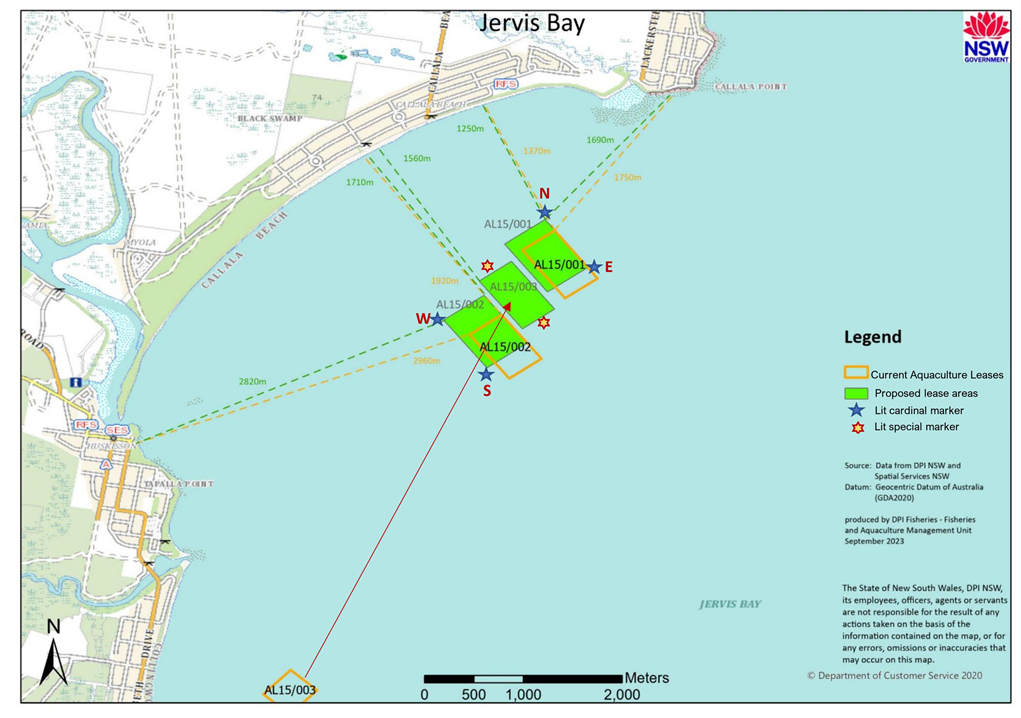
Figure 3. Map of Jervis Bay showing the current location (orange outlines) and proposed modification of the aquaculture leases (green filled polygons) and the proposed location of lease markers.
How much extra boating traffic will it create in Jervis Bay?
During the modification phase, the movement of vessels between the leases and wharf facilities will not alter significantly from existing approvals. Instead of servicing two lease areas under the current approval, vessels would only service the Callala Beach location if the modification application were approved.
Once the infrastructure is established, the movement of vessels would be in the range of zero to three return trips per day to undertake harvesting, repair, maintenance and cleaning. The vessels would range from trailer boats to larger purpose build harvesting vessels.
Will you be able to see the longline infrastructure from the shoreline or local lookouts?
If approved the Callala Beach leases would be located approximately 1,710m, 1,560m, and 1,250m from the closest shoreline, Callala Beach. The profile of the longline infrastructure and service vessels will be partly visible. The number of surface buoys will not be increased from the original approval and SCM are using subsurface buoys to reduce visual impact.
The proposed shift in leases would result in AL15/002 being 210m and AL15/001 being 120m closer to shore while AL15/003 would move from 650m to 1560m offshore.
Consent conditions seek to minimise visual amenity of the leases by: limiting the number, size and colour of surface buoys; minimising and streamlining surface infrastructure by limiting the height at which buoys are set; maximising subsurface infrastructure; and maintaining a low profile.
Service vessels will also be very similar to existing fishing, diving, whale/dolphin watching vessels that frequently navigate within Jervis Bay and are visible from Callala Beach.
What will happen to the lease infrastructure and stock if commercial activities were to cease?
It is a condition of an aquaculture permit that infrastructure must be removed from the lease areas of operation if cancelled, expired, or surrendered. Aquaculture leases in NSW are also required to contribute to an Aquaculture Lease Security Bond.
Consultation
NSW DPI and SCM Mariculture commenced community consultation to discuss the proposed modifications with key stakeholders 18 and 19 October in the Jervis Bay region. Feedback assisted prepare the Modification Application and this advisory Frequently Asked Questions document. There was positive and constructive feedback from associations, local businesses and agencies.
Three issues of concern were raised during discussions with key stakeholders:
- The impact of navigational lights – this would be reduced from ten to six lights if the modification application was approved
- Further lease expansion – NSW DPI is not looking to find additional longline lease area within Jervis Bay, NSW DPI believes future expansion may be directed offshore using new subsurface culture technology rather than in the embayment. The Vincentia lease would be extinguished if the modification application was approved
- The impact of biofouling on boats and moorings - there is a history of mussel settlement in Jervis Bay and Currambene Creek prior to the mussel farm operations. Typically, this spatfall comes and goes on a seasonal basis. Given the clockwise current flow in Jervis Bay, spatfall from the mussel farm would move offshore not circulate back into the embayment. Spatfall arising in the bay comes from wild stock. SCM are seeking support to research spatfall further.
How do I get more information or provide a response when the Modification Application goes on public exhibition?
A Modification Application has been submitted to the NSW DPE and it will be exhibited for public comment. It will be placed on exhibition on the NSW DPE website and via the NSW DPI website. The exhibition period is now closed.
Additional Information
Commercial Shellfish Aquaculture Leases in Jervis Bay - Environmental Impact Statement 2014
Current Modification Application - Department of Planning and Environment
The exhibition period is now closed.
Additional Links
For further information, please contact Aquaculture Management at the Port Stephens Fisheries Institute on 02 4916 3900 or email aquaculture.management@dpi.nsw.gov.au
